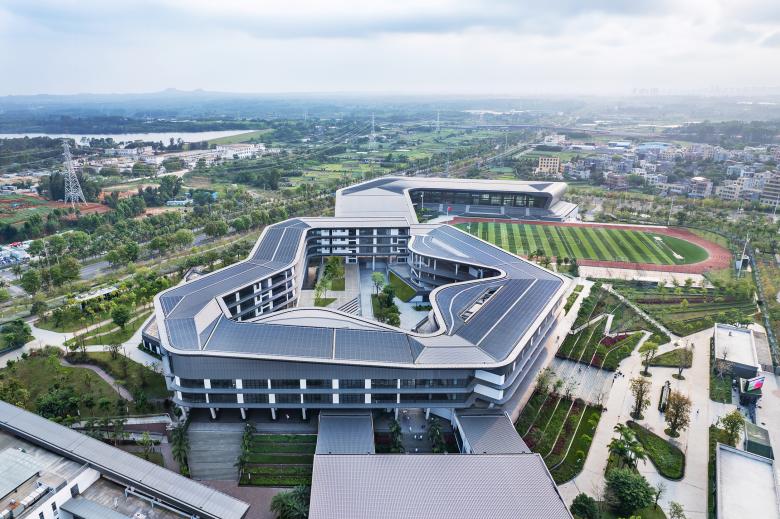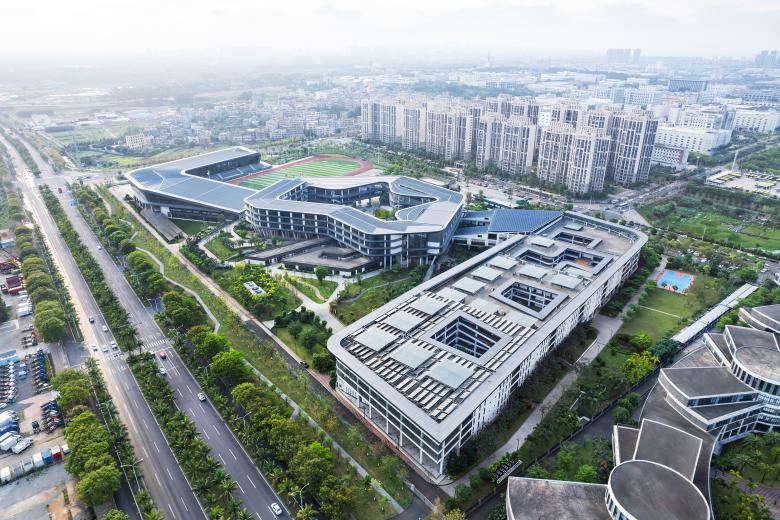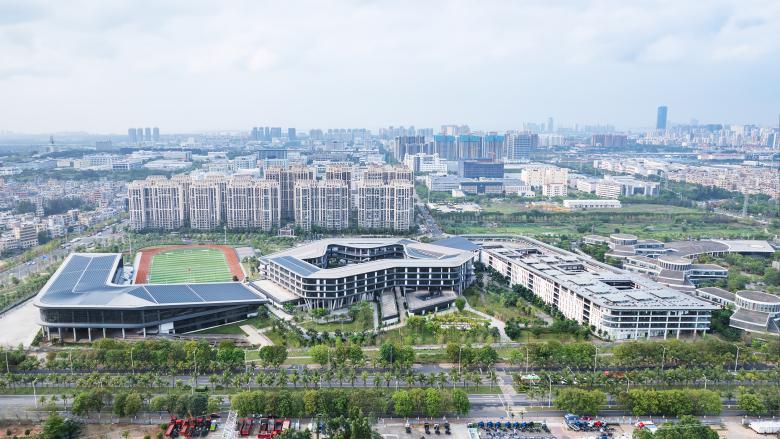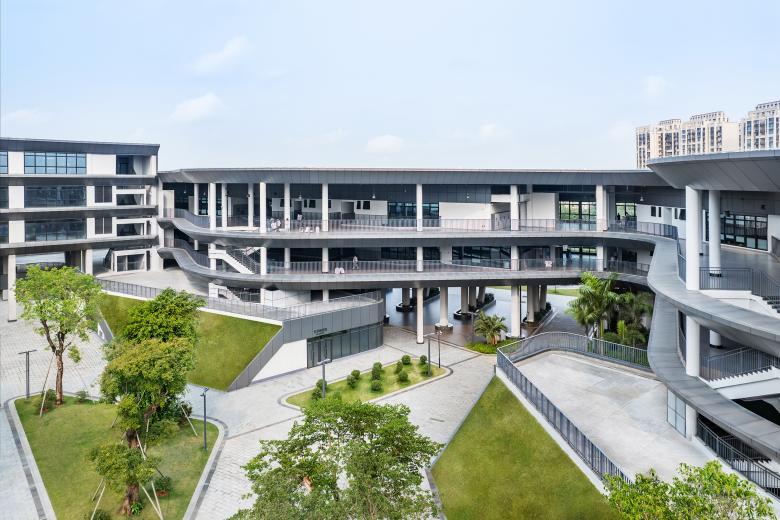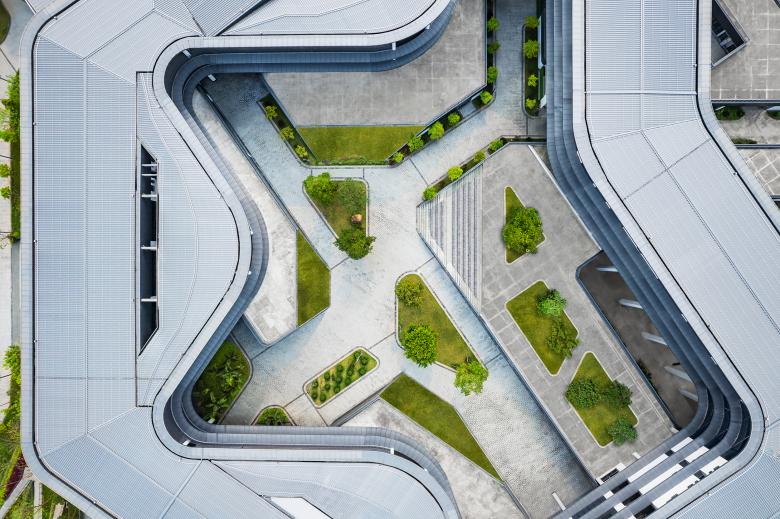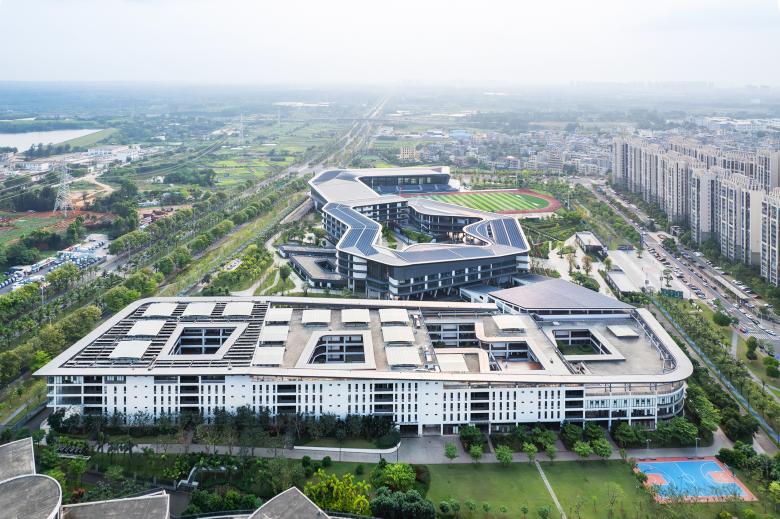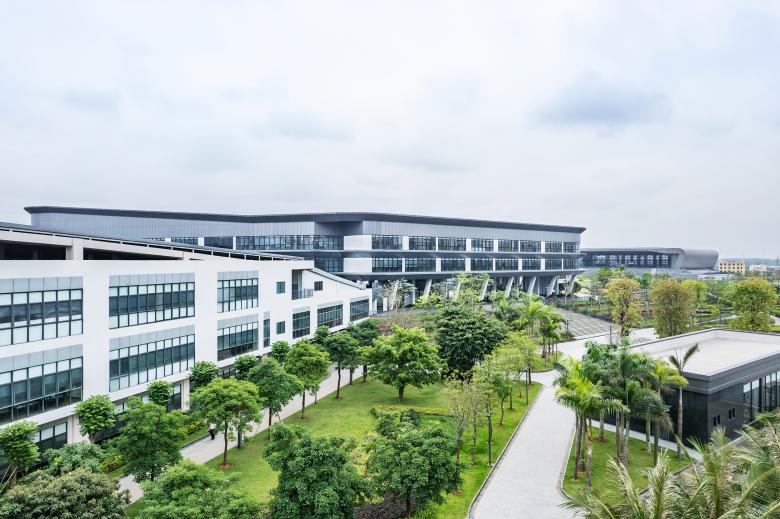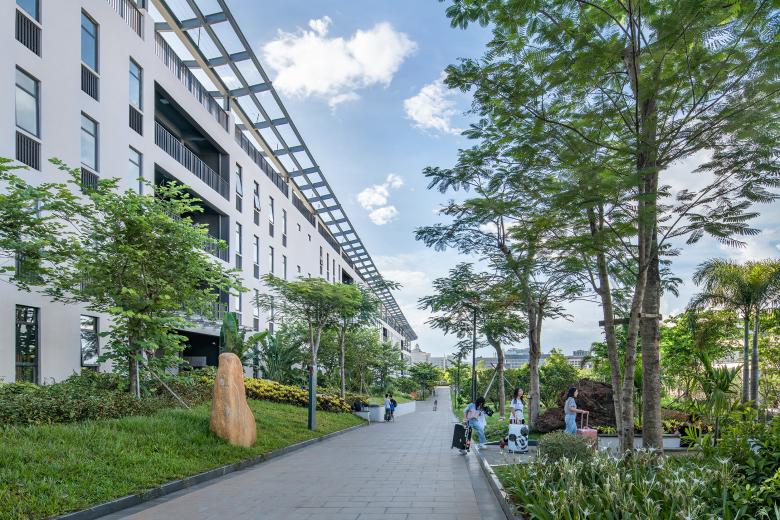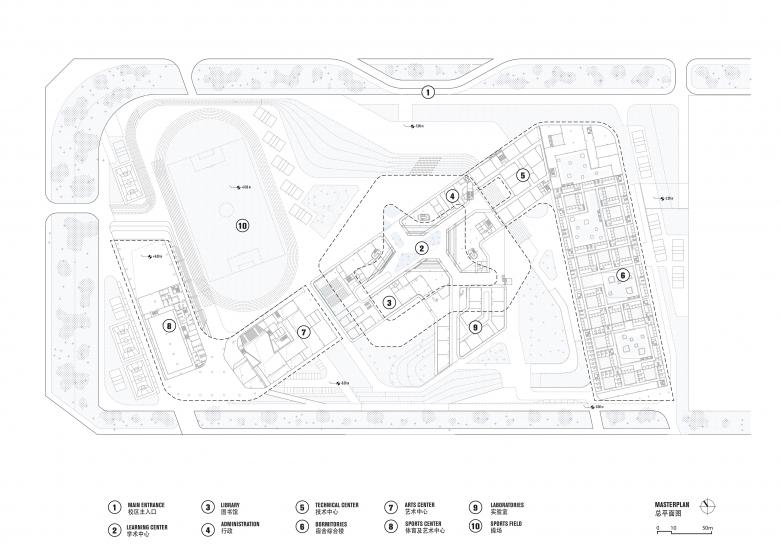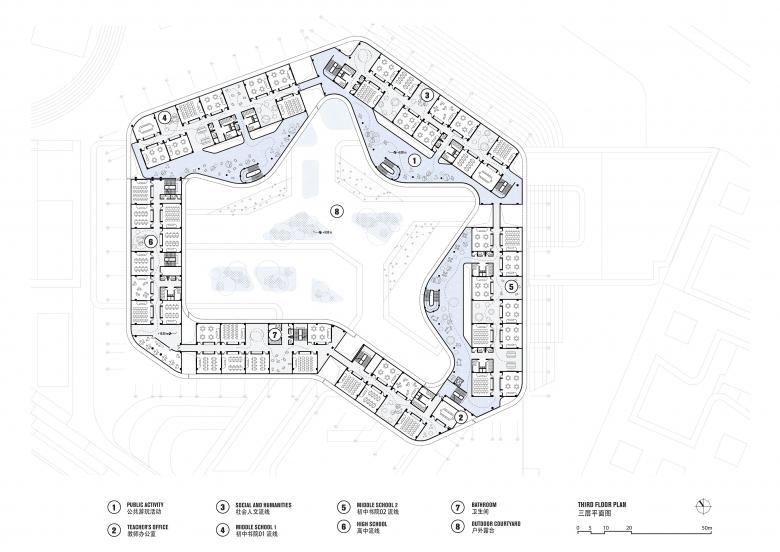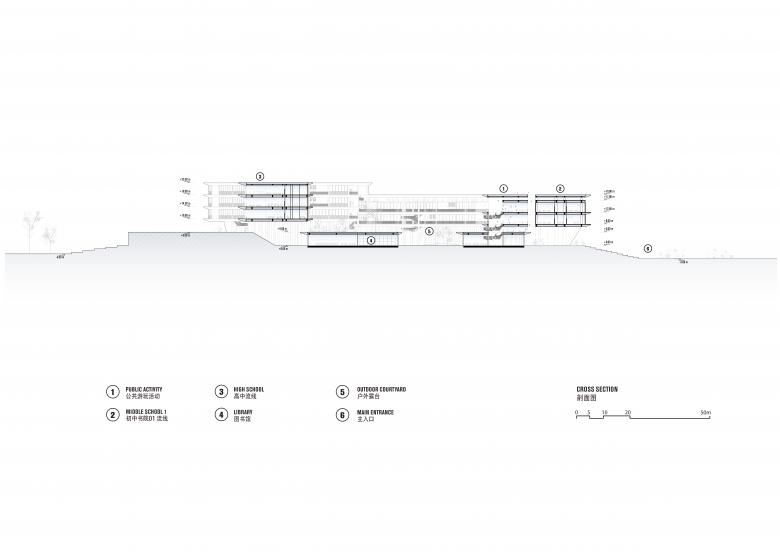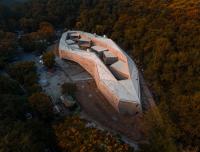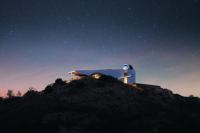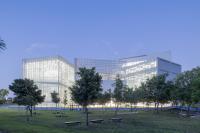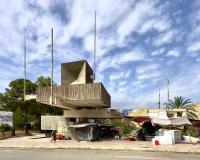Affiliated High School of Peking University, Haikou Campus
Haikou, China
The AI Era and Modern Education – As we move further into the AI era, where technologies like ChatGPT are becoming part of our everyday lives, education is evolving in remarkable ways. The design of the Haikou Campus of the Peking University Affiliated High School is a reflection of this evolution, shifting from traditional education models toward a more adaptable, personalized, and technology-enhanced environment. With AI technology shaping learning content and methods, the campus design places a strong emphasis on fostering creativity, problem-solving skills, and teamwork in students, ensuring their comprehensive development.
Hainan: A Hub for Educational Innovation – With the rapid development of the education environment, Hainan Province, known for its stunning tropical climate and picturesque island scenery, has also become a beacon of educational innovation. Recognized as a national education development and innovation pilot zone, Hainan receives strong support from the Ministry of Education as part of its plan to boost educational growth in central and western China.
The Peking University Affiliated High School, located in a district undergoing rapid renovations and developments, is exemplary to this education reform in Haikou. The site of the project spans over 33 acres, with a total construction area of approximately 130,000 square meters. Once fully operational, this expansive campus will serve around 3,600 students across six grades, including up to 1,500 middle school students and about 2,100 high school students. The school is dedicated to fostering an innovative spirit and practical skills in its students, preparing them for the challenges of a rapidly changing society.
An Unconventional Campus Design – Stepping away from traditional campus layouts, Crossboundaries has created a distinctive, curved S-shaped building with an organically shaped, elevated 'Cloud' learning center at its core. This innovative design addresses the topographical challenges of the site, particularly the significant height differences between the North and South ends. The S-shape is not only a visual element but also a practical response to wind direction and the orientation of sunlight and shadows. The building’s slim profile ensures effective cross-ventilation, while its low height minimizes the casting of long shadows on the terrain. Natural light is maximized where beneficial and carefully controlled in other areas.
The cloud-shaped learning center, centrally located on the campus, appears to float above the library and other public spaces. It serves as the main hub for interaction between teachers and students, housing classrooms for both the middle school and high school departments. Flanking the cloud, the building strip is arranged according to the natural contours of the terrain, providing a variety of 'micro-environments' that include a maker space, art center, sports facilities, and a dormitory complex.
Harmonizing with Nature – The overall design of the campus is guided by a deep respect for nature through the incorporation of tropical architectural concepts. These concepts consider factors such as sun shading, air circulation, ventilation, building orientation, and openings. The campus also integrates green design strategies and technologies in the form of solar energy and reclaimed water systems, to effectively reduce energy consumption, especially for cooling.
Connected Learning Spaces – The dynamic S-shaped building strip weaves through the entire campus, organically connecting the living, teaching, and sports areas. From its midpoint beneath the cloud, the building strip rises, reaching its full height at the dormitory on one side and the sports center on the other.
This design creates a sense of unity and balance with the floating cloud in the center, producing a wave-like movement that seamlessly follows the natural elevation changes of the site.
On the interior, the building strip is interconnected through various passageways, creating a lively and engaging social space. Students can move freely through different sections, engage in learning exchanges, showcase talents, and immerse in the campus culture. The layout of the spaces both promotes communication and interaction between teachers and students, and provides easy access to the surrounding natural environment at various points throughout the campus.
Extending Learning Beyond the Classroom – At the Haikou Campus, every space is designed to be a potential learning environment, fostering a rich, diverse, and open atmosphere that goes beyond the traditional classroom. Whether in the canteen, common areas, or outdoor spaces, students are encouraged to explore, collaborate, and grow.
As Binke Lenhardt, co-founder and partner of Crossboundaries, explains: “Learning should never stop at the classroom door—every space on campus has the potential to be a learning environment.”
The cloud learning center brings this philosophy to life by extending learning beyond traditional classes with its breakout spaces between classrooms and circulation areas. Whether studying, tutoring, socializing, or engaging in independent learning, students have endless opportunities to connect, also via laptops and other devices, empowering them to learn anytime, anywhere.
Three Key Components of the Campus – The Haikou Campus is visually unified by three main elements: the dormitory complex, the sports and activity complex, and the cloud learning center.
At the center of the campus lies the “Learning Cloud,” supported by 45 steel columns and housing classrooms for both junior and senior high students. The cloud-inspired design features a streamlined outline that hovers above the rest of the buildings.
The space serves as a hub of interactive learning, with various types of spaces that inspire different learning modes and teacher-student interactions. Beneath the main classrooms, you’ll find integrated teaching areas, libraries, laboratories, maker spaces, and multimedia rooms, all designed to meet the needs of modern education.
Hao Dong, co-founder and partner of Crossboundaries, highlights the impact of this space: “This learning space is enouraging and influencing students to develop and achieve their goals—a space that proactively tries to facilitate this process in the best possible way.”
The dormitory complex on the campus’s eastern side has its own distinct character, with a mix of functions including study rooms, dormitories, for both students and faculty, dining halls, and activity spaces. The complex consists of four interconnected units, each with a different height, stepping down from north to south. The design includes large and small courtyards to enhance ventilation and natural light, with slanted roofs that channel summer breezes, ensuring a comfortable living environment.
On the western side, the campus is dedicated to the arts and sports, featuring both indoor and outdoor sports facilities. The sports center requires significant height and is split into two floors, containing amenities like basketball hall, badminton courts, and a 50-meter swimming pool. Supporting areas, including changing rooms and showers, are conveniently located on a mezzanine level. The outdoor sports area is elevated, with parking provided below.
The sports and arts center, like the rest of the campus, is carefully integrated with the existing landscape. The sports field with running tracks surrounding it, blends seamlessly with the volume of the sports center, while the parking area, tucked below offers convenient access from the public street in the north.
Leading the Way in Educational Innovation – The design of the Haikou Campus fully reflects the requirements of modern educational concepts and teaching models, particularly in addressing the needs of the AI era. Its dynamic S-shaped building strip, featuring the floating Cloud Learning Center, moves beyond the rigidity of traditional school layouts, offering an open, flexible, and innovative environment that promotes healthy learning and living.
The school embraces new technologies like artificial intelligence, realizing personalized and intelligent teaching management and services that improve teaching effectiveness and learning quality. The construction of the Peking University Affiliated High School in Haikou serves as a valuable model for educational development and innovation in Hainan Province and across the country.
- Architects
- Crossboundaries
- Year
- 2024
- Client
- Affiliated High School of Peking University
